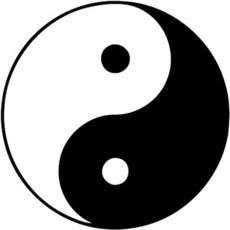Sleep
Relaxation and Sleep
Being able to relax is a necessary step on the path to sleep
Posted November 1, 2013
Over the years I have often recommended relaxation training to patients for various stress related disorders such as chronic pain and anxiety. Relaxation is also an important intervention for sleep disorders.
When we talk about relaxation we have in mind the goal of attaining a specific psychological and physiological state that is referred to as the “relaxation response”. Herbert Benson, M.D., is one of the researchers most associated with developing techniques to attain this state. He began working on understanding relaxation and its effects on the mind and body in the 1960’s and published the influential book “The Relaxation Response” in 1975. His initial work was based on Transcendental Meditation, which was becoming popular in the 1960’s & 1970’s. He developed a method that uses a focus on the breath with repeated refocusing on the breath as the mind wanders. This allows a relaxation response to occur over about a 20-minute period. It can be taught to people and is used to reliably bring about a relaxed state.
Most people think of relaxation as being the condition of engaging in non-work related activities such as reading a book, watching a video or perhaps playing a game. The meaning we are using here relates to achieving a state of physiological relaxation or calm with decreased activity in the sympathetic nervous system and is characterized by decreased heart rate, blood pressure, brain wave frequency and metabolism. The relaxation response is a natural state and is in opposition to the famous “flight or fight” response first described by Walter Cannon in the early 20th Century. The “flight or fight” response, of course, involves increased heart rate, blood pressure and metabolism as the organism prepares to fight off or flee from a stressor.
Numerous methods have been developed to allow people to attain the relaxation response. The earliest were most likely meditation techniques that were used thousands of years ago. Common contemporary examples are guided imagery, hypnosis, deep breathing, progressive muscle relaxation, biofeedback and some forms of yoga. All have in common a repetitive focus for the mind and a passive attitude. The repetitive focus could be a mantra or a word or phrase or just noticing the breath. In short order, the mind will wander (what Buddhists’ call the “monkey mind”). For the relaxation response to occur it is necessary to return the mind to the focus on the mantra, word or the breath. As this occurs again and again, the state of physiological and psychological relaxation develops.
It is obvious that relaxation is important for sleep. In order to make the transition into stage one sleep it is necessary to relax. We naturally do this as we try to become comfortable and settle into sleep. In fact, methods that many people use such as imagining a pleasant scene or “counting sheep” facilitate this transition from wakefulness into sleep. Additionally, relaxation can be helpful in dealing with insomnia as insomnia is largely a condition caused by over-arousal that persists into the night.
Stress, worry, anxiety and muscle tension are often involved in insomnia and other sleep disorders. Relaxation is likely the most commonly used intervention for insomnia. It can be used before bedtime to help decrease over-arousal prior to going to sleep by helping to “wind down” from the stresses of the day. It can also be helpful for people who begin to worry or experience anxiety when they wake up during the middle of the night by helping decrease anxiety so they can fall back to sleep more quickly. Relaxation techniques have been investigated in insomnia research and found to be useful. Research has shown that the most helpful techniques for patients with insomnia are stimulus control and sleep restriction, rather than relaxation. Yet relaxation can and does add to the benefits of these techniques.
Many relaxation techniques have been studied as treatments for insomnia. These include progressive muscle relaxation, autogenic training, meditation and imagery training. As part of a full treatment package for insomnia they may need to be combined with a comprehensive stress management program, as they may be insufficient in and of themselves. Many people benefit from professional training although some may be successful in simply using relaxation audio or video guides or techniques implemented from reading.
One method that is being used to help people relax wasn’t designed to create a relaxed state, but was intended to increase moment-to-moment awareness of experience. This is Mindfulness meditation. It is increasingly being used in psychotherapy and is gaining greater public awareness. I find Mindfulness helpful in my work because of its many potential uses. These range from helping clients in cognitive therapy increase awareness of their thought processes to helping pain patients cope with and accept their pain to helping people overcome their insomnia.
In the next post I will discuss Mindfulness. It is a form of meditation that many find also produces a sense of calm and physical relaxation. This form of meditation is useful in the treatment of insomnia because it allows people to be more aware of their thought processes, including their negative sleep thoughts, and can help facilitate the cognitive therapy of insomnia.



